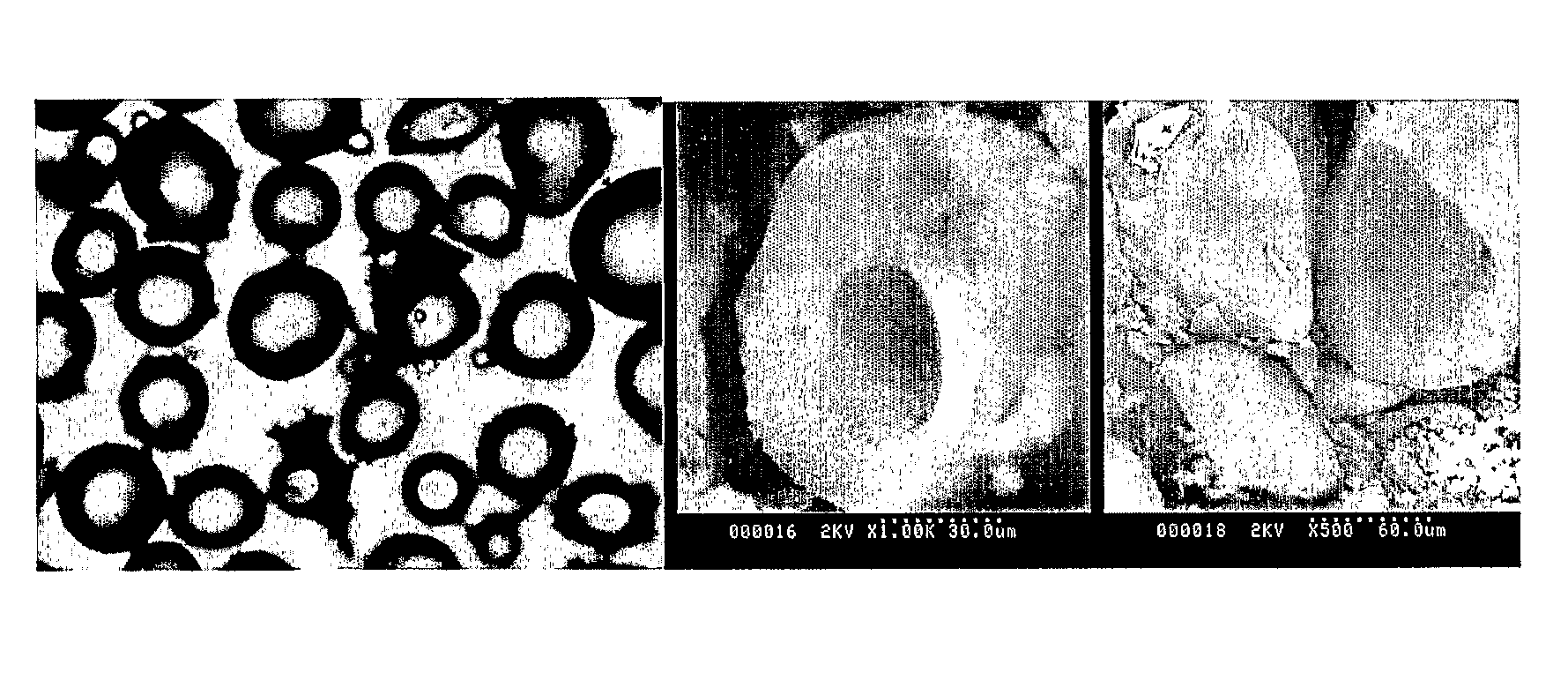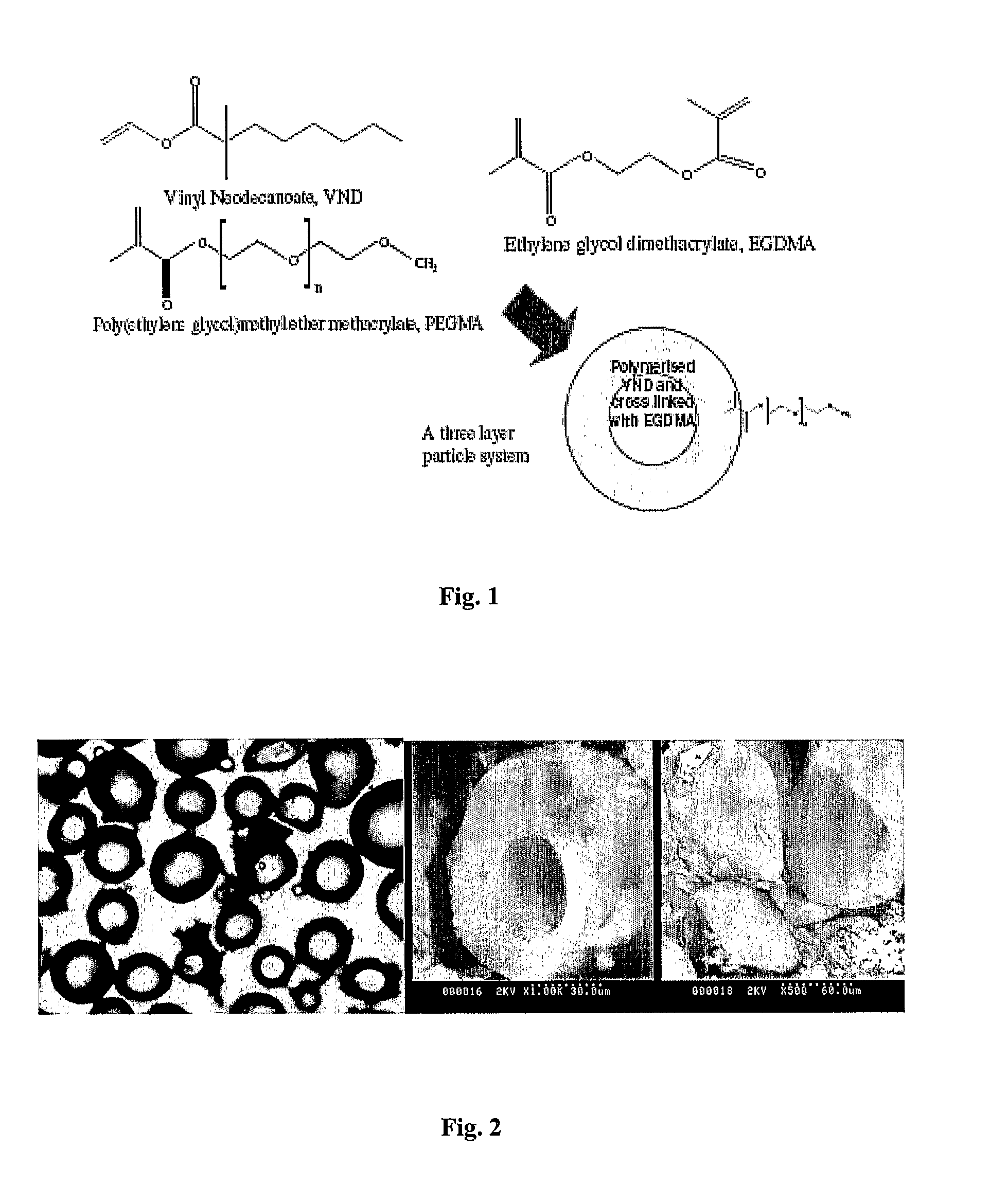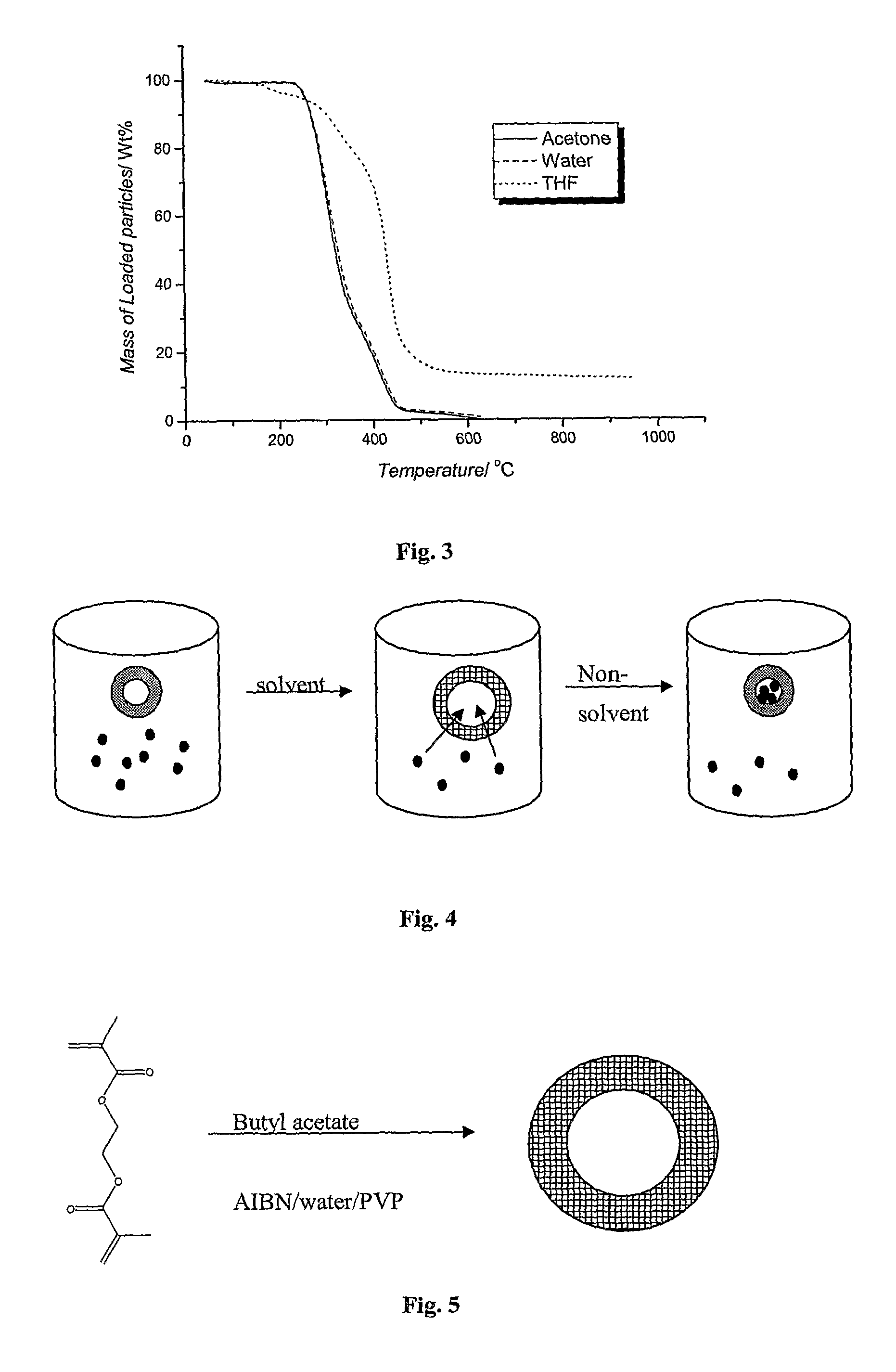Hollow microparticles
a technology of hollow microparticles and microparticles, which is applied in the direction of microcapsules, capsule delivery, drug compositions, etc., can solve the problems of limited surface thickness (typically nanoscale), limited range of options compared to inorganic particles, and insufficient stability of limited surface thicknesses
- Summary
- Abstract
- Description
- Claims
- Application Information
AI Technical Summary
Benefits of technology
Problems solved by technology
Method used
Image
Examples
example 1
[0146]The reactor was a 250 ml wide mouth flask modified to include four 10 mm radial baffles with removable 5 neck lid. It was equipped with an overhead stirrer, 2 four bladed 40 mm turbine impeller, a condenser and an oil bath. A mixture of 1.05 g PVP and 199.5 g water was added to the reactor and purged with nitrogen with the aid of a sonicator. After the degassing and sonication step, a mixture of ethylenegycol dimethacrylate EGDMA (2.0 g), vinyl neodecanoate (8.0 g), poly(ethyleneglycol) methacrylate (1.0 g), initiator (AIBN: 0.2 g, 0.095 wt %, 2 wt % of oil phase) and butyl acetate (5.0 g) as a non-solvent was introduced to the reaction flask and degassing was continued with slow stirring at 200 rpm for another 30 minutes. Reaction was started by ramping the temperature (20° C.) from room temperature to 70° C. in 1 hour. After a reaction time of 20 hours the microspheres were filtered off and washed with water and acetone. To remove the core of the particle the particles were ...
example 2
[0147]The reactor was a 250 ml wide mouth flask modified to include four 10 mm radial baffles with removable 5 neck lid. It was equipped with an overhead stirrer, 2 four bladed 40 mm turbine impeller, a condenser and an oil bath. A mixture of 1.05 g PVP and 199.5 g water was added to the reactor and purged with nitrogen with the aid of a sonicator. After the degassing and sonication step, a mixture of ethylenegycol dimethacrylate EGDMA (5.0 g), initiator (AIBN: 0.2 g, 0.095 wt %, 2 wt % of oil phase) and butyl acetate (5.0 g) as a non-solvent was introduced to the reaction flask and degassing was continued with slow stirring at 200 rpm for another 30 minutes. Reaction was started by ramping the temperature (20° C.) from room temperature to 70° C. in 1 hour. After a reaction time of 20 hours the microspheres were filtered off and washed with water and acetone.
Results:
[0148]Three non-solvents were employed (dodecyl acetate DA, butyl acetate BA and ethyl acetate EA). While DA only resu...
example 3
Highly Crosslinked Microspheres: Formation of Poly(EGDMA) Hollow Spheres with BuAc as Solvent
[0150]Suspension polymerization: A diagrammatic representation of the reaction is shown in FIG. 5. In a typical suspension polymerization, a 250 ml glass reactor with 5 necks was used. The reactor was modified to include four 10 mm radial baffles. The aqueous phase was prepared by dissolving 1.05 g of the stabilizer, poly(N-vinyl pyrrolidone) (PVP) in 199.5 g of distilled water. The aqueous phase was then transferred to the reactor and was purged with nitrogen with the aid of an ultrasonic tip for 30 min. The dispersed phase comprised BuAc (8.4 g), EGDMA (2.1 g) and AIBN (0.0525 g). After sonification of the aqueous phase, the dispersed phase was introduced to the reactor. Nitrogen purging was continued for another 30 min. The reaction was then allowed to proceed at 70° C. at a stirring speed of 700 rpm for a period of 20 hours. The percentage of EGDMA in the mixture with BuAc was varied in ...
PUM
| Property | Measurement | Unit |
|---|---|---|
| Polarity | aaaaa | aaaaa |
| Therapeutic | aaaaa | aaaaa |
| Hydrophilicity | aaaaa | aaaaa |
Abstract
Description
Claims
Application Information
 Login to View More
Login to View More - R&D
- Intellectual Property
- Life Sciences
- Materials
- Tech Scout
- Unparalleled Data Quality
- Higher Quality Content
- 60% Fewer Hallucinations
Browse by: Latest US Patents, China's latest patents, Technical Efficacy Thesaurus, Application Domain, Technology Topic, Popular Technical Reports.
© 2025 PatSnap. All rights reserved.Legal|Privacy policy|Modern Slavery Act Transparency Statement|Sitemap|About US| Contact US: help@patsnap.com



